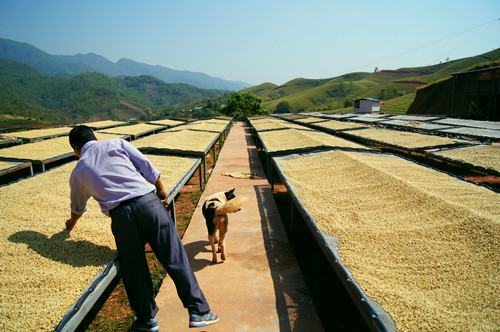Jiaxing imported coffee beans for the first time
Recently, the imported coffee beans accepted by Jiaxing Inspection and Quarantine Bureau for the first time have been successfully sold in the domestic market. The total amount of coffee beans is 15.5 tons, with a value of US $173000. The products include Yejia Fichel coffee raw beans, Sidamowoka coffee raw beans, Panamanian emerald, Ilida, Hartman and other manor-grade coffee raw beans, a total of 16 varieties, which is also the first time that coffee beans have been imported at Jiaxing port so far.
The imported raw beans of Yega Ficher Coffee and Sidamovka Coffee come from the most characteristic manor-level high-quality coffee bean producing areas in Ethiopia, while 14 varieties of estates such as Jade and Hartman come from the Panamanian Highlands, which currently occupy the position of the top coffee producing region in the world. After roasting and processing, these coffees produce unique floral fruit rhyme, berries, caramel, special sweetness, chocolate and other flavors, making them the objects sought after by coffee experts around the world.
Jiaxing Inspection and Quarantine Bureau through "the first time to carry out port inspection, the first time to implement on-site inspection, the first time to implement sample testing" to ensure that the first import inspection of raw coffee beans smoothly and quickly arrive at the consumer market. Raw coffee beans are the seeds of coffee trees, and there is a high risk of carrying pests, especially the coffee fruit bark beetle they carry is an entry quarantine pest in China. As soon as the goods arrive in Hong Kong, quarantine personnel will immediately carry out on-site quarantine on them to ensure the smooth entry of the first batch of raw coffee beans. According to the product characteristics and risk analysis, the testers also analyzed and detected the moisture, ash and caffeine of the samples, especially the key items such as pesticide residues and heavy metals.

Important Notice :
前街咖啡 FrontStreet Coffee has moved to new addredd:
FrontStreet Coffee Address: 315,Donghua East Road,GuangZhou
Tel:020 38364473
- Prev

Peruvian raccoon shit coffee the most expensive cup in the world can be sold for $60.
Peruvian coffee is very popular in the international market in recent years, frequently won the international coffee gold awards, Peruvian coffee mellow taste and soft sour taste is very popular. Now Peru has become the world's third largest exporter of coffee, especially a kind of coffee derived from raccoon droppings, tens of dollars a small cup, one of the most expensive coffee in the world. Raccoon poop coffee is expensive.
- Next

The first Rosa Coffee Manor in China was born in Yunnan
Yunnan Aixing Group successfully introduced the world's top coffee variety Rosa, with mature and stable quality of raw beans, good adaptability to climate and soil in this region, and rust resistance.
Related
- A complete list of coffee bean names and their meanings! What is Yejia Shefi coffee? Where is Mantelin coffee?
- What grade does Arida Manor Kaduai coffee beans belong to? What treatment is Arida ASD slow anaerobic sun exposure?
- The milk tea cup becomes smaller?! Overlord Tea Girl launches a new "Return to Yunnan" series
- Accused of selling counterfeit and high-priced coffee beans! Well-known boutique coffee brand "Oukelao" bowed and apologized!
- How to make espresso dumplings? Can I eat coffee and glutinous rice balls together?
- Save the unformed and stagnant powder cakes in one second! What is the problem with stagnant water in the powder bowl of the espresso machine?
- What does hand-brewed coffee stop mean? Why is it not recommended to make coffee by hand?
- Is it normal to smell like coffee? Why does coffee smell like alcohol? What's wrong with the strong smell of cold extract ice dripping ice brewed coffee?
- How to solve the problem that hand-brewed coffee extraction takes too long? Why is the water flowing so slowly when making coffee?
- The main points of making Australian white coffee, the proportion details, how does Australian white properly foam and blend the flowers?

